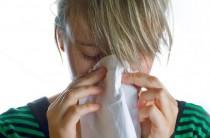The skin (epidermis) is the largest organ in the human body. It is the first barrier to various viruses and bacteria that strive to penetrate our body. In addition, the skin protects our body from various adverse temperature or chemical effects.
To carry out this function, the tissues of the epidermis are supplied with a large number of immune cells. But immune cells, in addition to protecting our body, also serve as direct participants in allergic reactions. In view of this, skin manifestations accompanying allergic diseases can be found very often. The appearance of various types of allergies on the skin is directly related to exposure to allergens. An allergen can come into contact both directly with the skin and cause allergy symptoms when ingested (food, drugs, etc.). On the skin, an allergic disease can be expressed in various types of symptoms, but it is always a noticeable rash that occurs after contact with the allergen.
The appearance of rashes on the skin is one of the clearest signs that there is an allergy to certain substances or factors. The localization of a skin allergic reaction can be different. In fact, the entire surface of the skin has this potential. The scale of allergic reactions can also be very different, from small foci on the elbows, to an extensive rash affecting most of the skin.
Causes of skin allergies
An allergy, no matter what type it is, is always a disease that develops as a result of certain disorders in the functioning of the immune system. During this deviation, the immune system begins the production of special proteins - antibodies that contribute to the production of stimulants for allergic reactions. The task of these processes, during an allergic reaction, is the removal of allergens. In this case, it means the penetration of these substances through the skin, which contributes to the appearance of various rashes.
hereditary factors
Skin allergies are a disease that can be hereditary. We pay attention to the word “may”, which indicates this probability, but does not serve as an absolute guarantee of its occurrence in a child burdened with allergic heredity.
Diseases of the gastrointestinal tract
In addition to the hereditary variant of the development of allergic reactions, the occurrence of a skin type of allergy may also be associated with a violation of the performance of the gastrointestinal tract. With disorders or diseases of the digestive system, the process of breaking down food proteins into amino acids can be disrupted. This leads to the fact that whole protein complexes, which the body perceives as hostile elements, enter the patient's blood. Antibodies are proteins in their structure, therefore they instantly combine with foreign proteins in the blood and cause allergic reactions, which leads to skin rashes.
Nutritional supplements
Additives that are used to produce modern food products are increasingly becoming a cause of skin allergies. Being completely alien components of nutrition, they more and more often provoke allergies. The most vulnerable to this are young children who love to consume various store-bought sweets. These foods are filled with various sugars, artificial colors, and sweeteners that make them appealing in both flavor and color. Alas, such sweets, in addition to their appearance, not only have no nutritional value, they are also harmful to health.
Unfavorable environmental situation
Modern industrial production is accompanied by the release of various harmful components into the atmosphere. This explains one very revealing fact: in general, residents of large cities with a developed industrial infrastructure suffer from allergic diseases. The waste products themselves can be allergens and provoke allergic skin reactions. In addition, they have an adverse effect on the development of immunity, which becomes overly irritable due to constant contact with irritants.
Excessive household sterility
Oddly enough, excessive sterilization of human conditions is just as harmful as a complete lack of hygiene. The life of a modern person is a sanitary and hygienic situation, which is at a high level, which deprives the immune system of contact with many adverse environmental factors. But, for its normal formation, this contact is simply necessary. The immune system was created to fight external aggression. In the complete absence of this factor, it begins to form with various failures.
Allergies and malnutrition
Recently, globalization has led to the widespread introduction into the human diet of those products that his body was not ready to face. Residents of the middle lane, and even more so, the northern regions have not seen such products as citrus fruits, kiwi, avocados, etc. Tropical fruits do not fit into the diet of a European person, and naturally, they are perceived by his body as alien.
Another cause of allergic reactions is improper, unbalanced and untimely nutrition. Just the kind that modern man sins. The low content of products of high biological value, in favor of various semi-finished products and refined products, has negative consequences for the immune and digestive systems, which leads to the development of skin manifestations of allergies.
Types of skin allergies
Skin manifestations of allergies can occur when allergens of various types have entered the body. The most common culprits for this are food components, drugs or insect bites. Not the last role in the development of skin manifestations of allergies can be played by the components of cosmetics, household chemicals, as well as fabrics. The skin, due to the fact that they can often and for a long time in contact with these allergens, become susceptible to various skin manifestations of allergies.
In addition, allergies can also be provoked by heat and cold factors that affect its surface. This leads to certain metabolic changes within the cells of the epidermis. As a result, the released substances, in the presence of high sensitivity, can provoke the development of an allergic skin reaction.
Allergic dermatitis
Dermatitis is a type of skin allergy accompanied by the development of inflammatory processes under the influence of an allergen. Allergic dermatitis can be localized within individual areas, or it can be of a general nature and spread to most of the skin. Localization of dermatitis is typical for its contact form, which develops with direct exposure to the allergen on the skin area. Basically, the manifestations of the contact type of dermatitis are characterized by location in places of direct contact with the allergen.
Symptoms of dermatitis
There are several stages in the development of dermatitis. The first stage is characterized by the appearance of red swollen areas or peeling. In the future, there is the occurrence of frequent nodular rashes, which then burst. The content released during this turns into a hard crust. With dermatitis, sensitive areas of the skin secrete a large amount of a specific fluid. This manifestation of an allergy on the skin accompanies frequent itching, which leads to the fact that the patient combs certain areas of the skin. As a result, this appears traumatization and further aggravation of the symptoms of the disease.
Skin manifestations in the form of dermatitis can often be found with food allergies. With this disease, they develop after a significant amount of time. From the moment the allergen enters the body to the development of symptoms of dermatitis, it may take several days, and in some cases even several weeks. In some cases, itching appears before the onset of skin transformations, and not after or during them.
Photo of allergic dermatitis
Neurodermatitis
Neurodermatitis is a skin manifestation of an allergy, the development of which is greatly influenced by factors of the nervous system. With stress, irritability, insomnia, its symptoms are greatly enhanced. With neurodermatitis, there is an increase in the synthesis of antibodies by B-lymphocytes during secondary contact with the source of allergy. Its symptoms can not only intensify under the influence of mental factors, but also arise due to the presence of nervous disorders. Often the cause of the development of this type of skin manifestations is depression, irritability, psychosis and other disorders of the normal functioning of the nervous system.
Symptoms of neurodermatitis
The main symptom of neurodermatitis is the appearance of a rash on the skin that looks like a collection of small bubbles in large numbers. Most often, this form of skin disease is manifested on the neck, face, elbows and knees, as well as in the groin area. Localization of neurodermatitis may not be limited to these areas. In the case of the appearance of symptoms of the disease in one area, for example, on the elbow, we are talking about a limited form of neurodermatitis. At the same time, it can be localized in large areas of the skin.
With neurodermatitis, dryness of the skin appears, the outer layer of the epidermis is covered with small falling scales. Itching leads to the fact that the outer layer of the skin is largely traumatized. In this case, bleeding wounds appear, which aggravate the course of the disease. Itching can also provoke increased insomnia, while lack of sleep provokes nervousness and exacerbates the symptoms of neurodermatitis.
Photo of neurodermatitis
Hives
Urticaria is a skin type of allergic reaction that occurs with the appearance of a specific rash that is indistinguishable from the burn left by nettle leaves. Urticaria can be either the only allergic symptom or develop along with other manifestations of this disease. The acute form of this disease can occur almost immediately after interaction with a provocative substance. In this case, it is very easy to determine its causes. While the development of chronic urticaria can occur after many days, after contact with the allergen.
Urticaria symptoms
Symptoms of urticaria are the manifestation of characteristic rashes that have a slight swelling and a round shape. Their color ranges from pink to deep red. Areas of inflammation are warmer to the touch than unaffected skin. If this disease is manifested intensively, then the body temperature can be significantly increased. In addition to direct interaction with the allergen, exposure to ultraviolet radiation or low temperatures can cause symptoms of urticaria. Very common is solar, as well as cold urticaria.
Photo of urticaria
Treatment of skin manifestations of allergies
In the treatment of skin allergies, both general remedies (tablets, injections) and special hormonal ointments, creams and gels are used for direct treatment at the sites of an allergic reaction. Treatment is determined by the doctor, based on the general health of the patient, the intensity of skin manifestations and the type of disease. An important role in the choice of medicines is played by age, as well as the presence or absence of pregnancy.
Antihistamines used in the form of tablets to relieve swelling of the skin, itching, rashes and other results of an allergic reaction. If the skin is not the only organ affected by an allergic reaction, then the use of antihistamines will help eliminate other allergic manifestations. Corticosteroid preparations for local use allows you to accurately neutralize the skin manifestations of the disease, with a minimal risk of side effects on the entire body. If the allergic reaction is severe, injectable corticosteroids are used.
Please note that this article is for reference only and does not serve as a self-diagnosis or treatment. If you experience symptoms of an allergy, we strongly recommend that you immediately consult a doctor.















